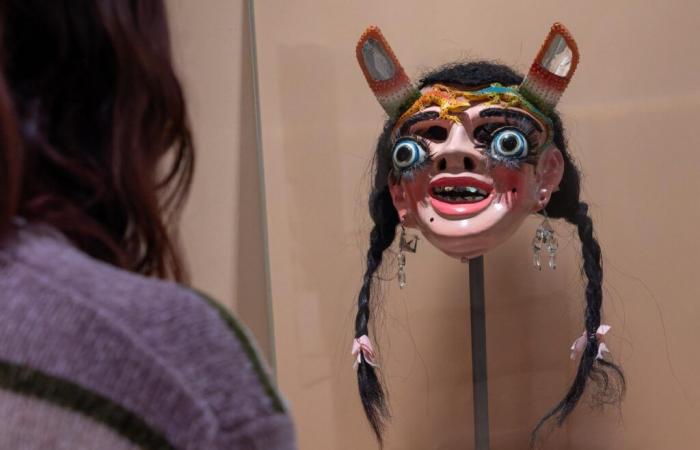Valencia. The director of CaixaForum ValenciaÁlvaro Borrás, indicated the coincidence: while in Rome a conclave was celebrated, in which a hundred men decided the path that the Catholic Church will take in the coming years, the Valencian Cultural Center presented Revered and fearedan exhibition co -produced by the British Museum and the “La Caixa” Foundation, which reexamines the representations of female power over 5,000 years and five continents. It does it through 166 pieces that explore the multiple dimensions of female divinity, from the sacred to the monstrous, and with the firm will to question the inherited cultural frameworks.
According to Belinda createcurator of the sample and conservative of the British Museum, the goal is not to offer a closed narrative: “We wanted this exhibition to be a conversation between the object and the visitor,” he explained in the presentation. “That is why we deliberately create a discursive tone.”
The exhibition is articulated in five thematic sections: creation and nature, passion and desire, magic and evil, justice and defense, compassion and salvation. Each of them brings together objects from different cultures and times, accompanied by contemporary interventions.
“We felt that these were universal aspects that many religions and beliefs have addressed from their own structures. The objective of this was to include different ideas within each space to show that there is not a single way of understanding these concepts or how they relate to female identity and authority,” he said.
To create, this approach allows each visitor to confront their own prejudices: “Where we are born in the world, we grow with certain preconceived ideas about what compassion, violence or love means. What we try here is to show that there are other ways of thinking about those beliefs with which we have grown up.”
One of the curatorial efforts has been to incorporate not only the academic perspective of the British museum, but also contemporary voices linked to the spiritual practices represented. “We work with communities of faith to invite you to share with us your personal views on how these spiritual figures are related to their lives today.”
And it is that objects of religious worship have a meaning for believing communities. There will be visitors who will see the exhibition as something purely cultural, but other people give spiritual meanings to what show the rooms.
In some cases, that involved clarifying the usual explanations: “Even within the same faith there are people who interpret the same object in very different ways. So we try to make it clear that these are beliefs of specific communities, but also guiding us for what the objects themselves tell us.”
-Fear and worship
One of the most striking spaces of the exhibition is the one that addresses the fear and demonization of female figures. Here are witches, demons and dangerous characters that, in many cases, represent a symbolic threat to the patriarchal authority.
“What was more interesting to work in this section is the specific thing that is to certain cultures,” he said. “There is not as much cultural diversity in this part as in other sections of the exhibition that present more positive manifestations of the female authority, which seemed to reassure. Not all cultures think like this.”
Most of the examples of this section come from Judeo -Christian, Greco -Roman or Japanese traditions: “They are traditionally very patriarchal cultures, where the role of women was mostly linked to the domestic sphere. These stories arise from fear that women act independently, outside that assigned space.”
In contrast, he explained that in Hinduism there are female demons, but “there is a balance between female and male demons, and the emphasis is not put in gender as it does in Judeo -Christian or Japanese beliefs.”
Another central idea of the sample is that the representation of female power rarely conforms to a binary model of good or bad, loved or feared. Figures such as Sekhmet, Egyptian goddess of violence and healing, or Kali, compassionate mother and goddess of destruction, embody those tensions: “It is not a dichotomy. Many of these figures combine both. current Hinduism and also instills fear. ”
He added: “These powerful women are not one thing or another. They are not loved or feared. They are both. They are gentle and terrifying. They are violent and generous. They are all those things at once. And I think that is an important message of the exhibition.”
Revered and feared It does not offer closed responses, but it does invite the questioning of rooted ideas in an area as visceral as the religious. Through more than 160 pieces – from ancient busts to Marian iconography or contemporary activist photography – the exhibition states that female power is, above all, multiple, ambivalent and deeply cultural: “We wanted the visitor to think of his own prejudices, because we all carry with us ideas about what compassion means, violence, love … and this exhibition shows that there are many ways of understanding all that Belinda create. València is the last stop of this itinerant exhibition, the last opportunity to see in Spain part of the impressive funds of the British Museum.






